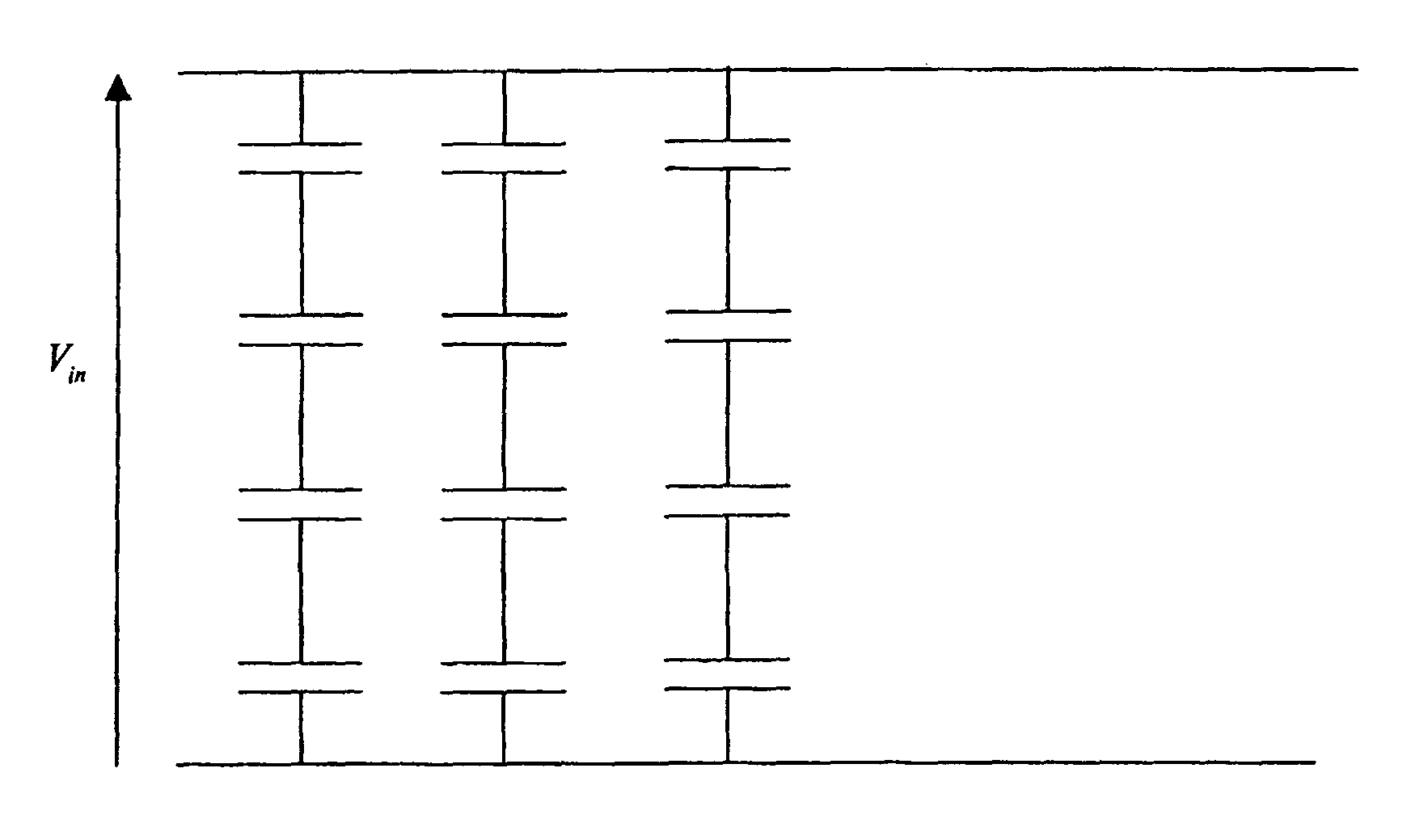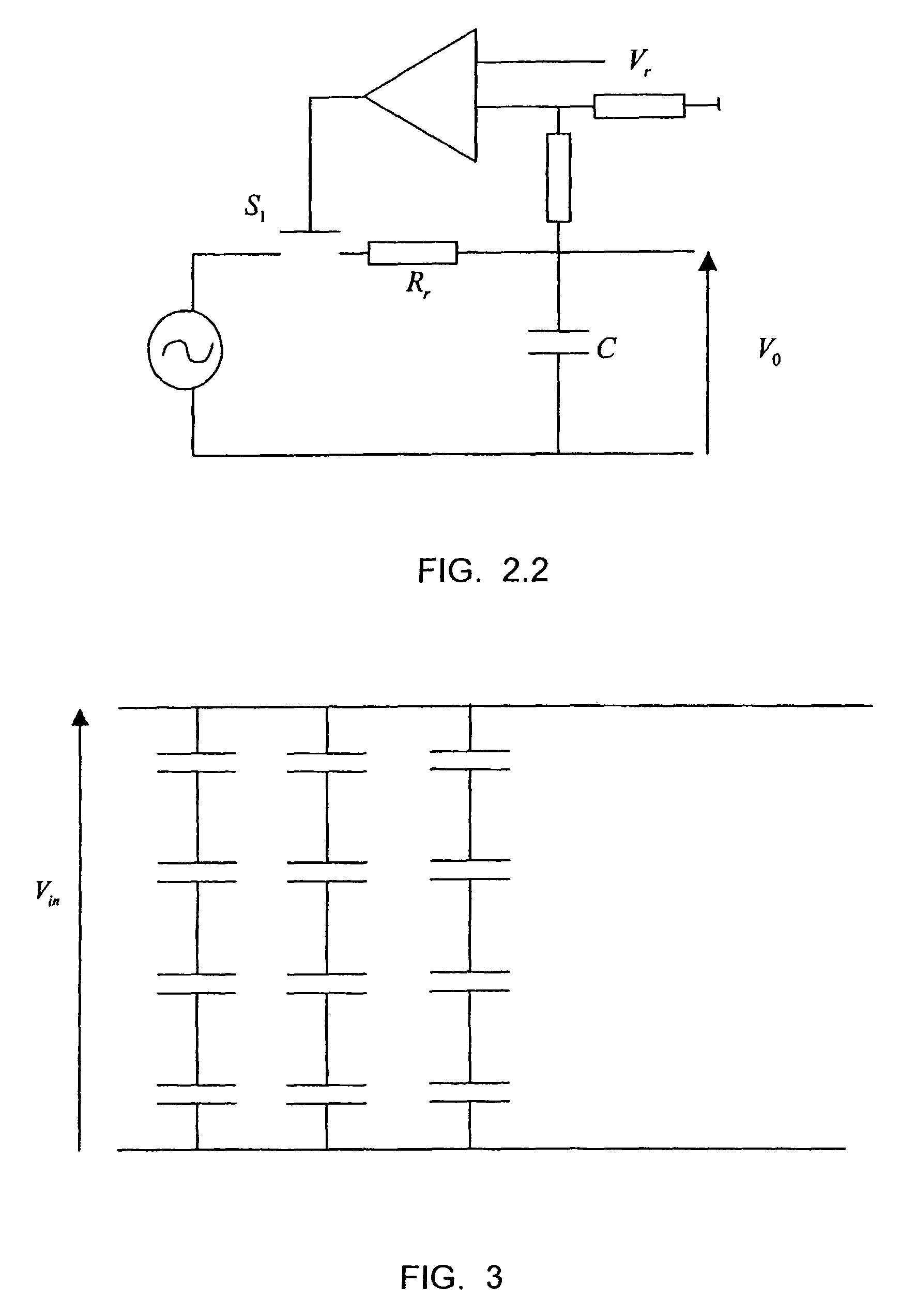Regulator circuit and corresponding uses
a voltage or current regulator and circuit technology, applied in the direction of electric variable regulation, instruments, apparatus without intermediate ac conversion, etc., can solve the problems of limiting the application of the circuit, reducing amplification capacity, reducing efficiency, etc., to reduce the amount of necessary coils, reduce switching time requirements, and increase the effect of efficiency
- Summary
- Abstract
- Description
- Claims
- Application Information
AI Technical Summary
Benefits of technology
Problems solved by technology
Method used
Image
Examples
Embodiment Construction
[0056]FIGS. 1.1 and 1.2 show the basic concept of charge pumps: a circuit comprising two input terminals and a plurality of condensers C1, C2, C3, C4 series connected with the input terminals. All the condensers are charged at a voltage Vi and subsequently the circuit is connected again so that the condensers are in parallel. The voltage in output terminals Vo is four times the voltage Vi. Furthermore, doing the sequence in a reverse way, it is possible to divide the voltage by four. In these schemes neither all the interconnection or the corresponding relays have been shown because a plurality of them must exist in order to allow all the required connections.
[0057]With this type of circuit it is possible to increase or reduce the output voltage in a discrete manner: as multiples of the input voltage or as divisions of the input voltage by an integer. Thus, a preferred solution of a regulator circuit according to the invention comprises voltage monitoring means of at least one of th...
PUM
 Login to View More
Login to View More Abstract
Description
Claims
Application Information
 Login to View More
Login to View More - R&D
- Intellectual Property
- Life Sciences
- Materials
- Tech Scout
- Unparalleled Data Quality
- Higher Quality Content
- 60% Fewer Hallucinations
Browse by: Latest US Patents, China's latest patents, Technical Efficacy Thesaurus, Application Domain, Technology Topic, Popular Technical Reports.
© 2025 PatSnap. All rights reserved.Legal|Privacy policy|Modern Slavery Act Transparency Statement|Sitemap|About US| Contact US: help@patsnap.com



